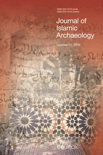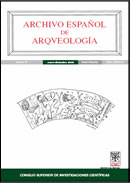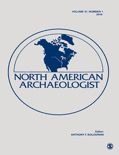
Britannia
Scope & Guideline
Navigating the Depths of Archaeological and Historical Inquiry
Introduction
Aims and Scopes
- Roman Archaeology and Material Culture:
The journal emphasizes detailed archaeological studies, showcasing artifacts, settlement patterns, and material culture of Roman Britain, allowing for a deeper understanding of daily life and societal structures during this period. - Historical Contextualization:
Papers often contextualize archaeological findings within historical narratives, exploring the socio-political dynamics of Roman Britain and its interactions with other cultures and regions. - Interdisciplinary Approaches:
The journal promotes interdisciplinary methodologies, incorporating insights from history, archaeology, anthropology, and digital humanities to provide a comprehensive understanding of Roman Britain. - Regional Studies:
There is a consistent focus on regional studies, highlighting the diversity of Roman experiences across different areas of Britain, including urban, rural, and frontier contexts. - Cultural and Religious Practices:
Research often delves into the cultural and religious practices of Roman Britain, examining artifacts related to rituals, beliefs, and the integration of local and imperial traditions.
Trending and Emerging
- Big Data and Digital Archaeology:
There is a growing trend in utilizing big data and digital methodologies to analyze archaeological findings, facilitating broader patterns of settlement and material culture across Roman Britain. - Childhood and Burial Practices:
Research focusing on childhood and burial practices has gained prominence, revealing insights into the social and cultural significance of children in Roman society and how they were memorialized. - Environmental and Economic Studies:
Emerging themes include the study of environmental impacts and economic practices during the Roman period, with a focus on agriculture, trade, and resource management. - Cultural Identity and Integration:
Papers are increasingly exploring themes of cultural identity, interaction, and integration between Roman and indigenous populations, reflecting a more nuanced understanding of cultural dynamics. - Public Engagement and Heritage Management:
There is an increased emphasis on public engagement with Roman heritage, including studies on how archaeological sites and findings are presented to the public and their role in contemporary society.
Declining or Waning
- Military Studies:
Research focusing specifically on military aspects, while still relevant, appears to be less frequently published, suggesting a possible shift towards more civilian-oriented studies and cultural aspects of Roman life. - Monumental Architecture:
The exploration of monumental architecture, such as fortifications and large public buildings, has decreased in favor of more nuanced studies of everyday life and smaller-scale archaeological findings. - Traditional Chronological Studies:
There seems to be a reduction in papers strictly adhering to chronological frameworks without integrating broader thematic or cultural analyses, indicating a trend towards more interdisciplinary studies.
Similar Journals

Journal of Islamic Archaeology
Fostering Dialogue on Islamic Archaeological DiscoveriesJournal of Islamic Archaeology is a distinguished publication dedicated to advancing the field of archaeology through the lens of Islamic heritage and culture. Published by EQUINOX PUBLISHING LTD, this journal provides a platform for researchers, professionals, and students to disseminate their findings and engage in critical dialogue regarding the archaeological aspects of Islamic societies from 2014 to the present. With an ISSN of 2051-9710 and E-ISSN 2051-9729, the journal is indexed within significant academic databases and positioned notably in the Q3 and Q2 quartiles for archaeology in the Arts and Humanities and Social Sciences categories, respectively. The journal fosters scholarly exchange and innovation, drawing attention to the rich tapestry of Islamic archaeology, and securing its role as an essential resource for practitioners and academics alike. Its commitment to rigorous peer-review and high-quality contributions ensures a valuable repository of knowledge, enhancing the understanding of an often underrepresented field in archaeology.

Annales Instituti Archaeologici
Fostering Scholarly Dialogue in the Archaeological CommunityAnnales Instituti Archaeologici is a distinguished journal published by INST ARHEOLOGIJU, dedicated to advancing research in the field of archaeology. With an ISSN of 1845-4046 and an E-ISSN of 1848-6363, this journal serves as a vital platform for the dissemination of innovative archaeological studies and findings, reflecting the evolving trends and methodologies in this fascinating discipline. Based in Croatia, the journal captures a global audience, emphasized by its Q3 ranking in both Archaeology categories as per the latest 2023 metrics, indicating a solid presence in the academic landscape. Although it does not currently offer Open Access options, its impactful contributions are recognized through its Scopus ranks, where it stands at #137/413 in Archaeology related to Arts and Humanities and #135/354 in Social Sciences. Researchers, professionals, and students interested in the latest archaeological research and its applications will find Annales Instituti Archaeologici to be an invaluable resource, promoting knowledge and fostering scholarly communication within the archaeological community.

HISTORISCHES JAHRBUCH
Charting New Territories in Historical Research.HISTORISCHES JAHRBUCH is a notable German academic journal published by VERLAG KARL ALBER, dedicated to the field of history. With a rich tradition that began in 1941, this journal serves as a platform for scholarly research, exploring various historical themes and methodologies. Although specific impact factors are not readily available, its categorization as Q4 in History indicates its role in the wider academic discourse. HISTORISCHES JAHRBUCH is primarily accessible through subscription, reflecting its commitment to traditional publishing while providing valuable insights for historians, researchers, and students. The journal's coverage, which has converged over selected years including 1980, discontinuing in Scopus, highlights its shifting focus and the evolving landscape of historical study. As a contributing member to the historical scholarship community, HISTORISCHES JAHRBUCH continues to enrich the understanding of historical narratives and foster academic exploration.

Archivo Espanol de Arqueologia
Advancing archaeological knowledge through open access.Archivo Español de Arqueología is a prestigious journal published by the Consejo Superior de Investigaciones Científicas (CSIC), dedicated to the field of archaeology and the historical sciences. Since its transition to Open Access in 1991, this journal has been a significant resource for scholars and practitioners in Spain and beyond, ensuring the dissemination of high-quality research to a broad audience. With an impressive Scopus ranking that places it within the top 20% of journals in the disciplines of History and Archaeology, Archivo Español de Arqueología plays a crucial role in advancing academic discourse and promoting innovative archaeological methodologies. The journal has maintained rigorous standards, reflected in its placement within the Q2 and Q3 quartiles, enabling it to establish a reputation for excellence and reliability in archaeological scholarship. Researchers, professionals, and students are encouraged to explore the journal's diverse array of articles from its foundation year of 2009 to the present, enriching their understanding of the past through the latest findings and theoretical advancements in archaeology.

Gladius
Illuminating the Past: Rigorous Research for a Richer UnderstandingGladius is a prestigious academic journal dedicated to the field of History, published by CONSEJO SUPERIOR INVESTIGACIONES CIENTIFICAS-CSIC in Spain. With an ISSN of 0436-029X and E-ISSN 1988-4168, this journal has been a cornerstone for historical scholarship since it became Open Access in 1961, providing free and unrestricted access to its rich array of studies. Having achieved a commendable Q2 ranking in the Arts and Humanities History category for 2023, Gladius is recognized for its rigorous peer-reviewed articles that contribute significantly to the understanding of historical contexts and developments. It is indexed within Scopus, ranked #659 out of 1760 in its field, and boasts a 62nd percentile, highlighting its relative prominence among its peers. Located in Madrid, Spain, Gladius continues to foster intellectual growth and debate, making it an invaluable resource for researchers, professionals, and students seeking to deepen their knowledge and engage with contemporary historical discourse.

Kratkie Soobshcheniya Instituta Arkheologii
Exploring the Depths of History and ArchaeologyKratkie Soobshcheniya Instituta Arkheologii is a prestigious academic journal published by IZDATELSTVO NAUKA, specializing in the fields of archaeology and history. With an ISSN of 0130-2620, this journal has established itself as a vital resource for scholars, researchers, and students engaged in the humanities, particularly within the Russian Federation. Recognized for its high-quality contributions, it has achieved a remarkable Q1 ranking in both Archaeology and History for the year 2023, demonstrating its significant impact and relevance in these disciplines. Although it does not provide open access, the journal's robust positioning in Scopus — ranking #634 in History and #208 in Archaeology — further attests to its scholarly authority and the insightful research it disseminates. The journal covers a comprehensive range of topics, facilitating a deeper understanding of archaeological practices and historical methodologies, thereby fostering academic dialogue and knowledge advancement from 2018 through 2024. Addressing an international audience of professionals and students alike, Kratkie Soobshcheniya stands as a cornerstone for innovative research in archaeology and history.

NORTH AMERICAN ARCHAEOLOGIST
Uncovering the Past, Shaping the FutureNORTH AMERICAN ARCHAEOLOGIST, published by SAGE PUBLICATIONS INC, is a prestigious journal that serves as an essential resource for professionals and scholars in the field of archaeology. With its ISSN 0197-6931 and E-ISSN 1541-3543, the journal aims to disseminate high-quality research that contributes to the understanding of the historical and cultural significance of North America from prehistory to the present. As of 2023, it holds an impressive Q2 category in Archaeology and ranks within the Q1 tier for Archaeology (arts and humanities), positioning it among the top journals in its field. Its Scopus rankings further emphasize its significance, reflecting a commendable percentile standing that underscores its influence in both arts and humanities and social sciences. The journal is committed to offering a platform for innovative research and scholarly discussion, making it invaluable for researchers, professionals, and students dedicated to advancing archaeological knowledge.

Spal
Uncovering the Past, Shaping the Future.Spal is a distinguished academic journal dedicated to the fields of Archaeology and History, published by the University of Seville, Editorial. With an ISSN of 1133-4525 and an E-ISSN of 2255-3924, it has established a prominent reputation within the scholarly community, currently enjoying an impressive Q1 ranking in Archeology (Arts and Humanities) and History, alongside a Q2 ranking in Archeology for 2023. The journal serves as a critical platform for researchers, professionals, and students alike, promoting the dissemination of cutting-edge research and innovative methodologies in these vital disciplines. Spal's Scopus Ranks place it in the 84th percentile for Arts and Humanities - History and the 72nd for Archeology within the field, emphasizing its impact and relevance in contemporary scholarship. Although it operates under a traditional access model, its commitment to advancing knowledge and discourse in archaeological and historical studies remains unwavering. The journal's coverage spans from 2015 to 2024, positioning it well to contribute to ongoing academic conversations and foster collaborations within the global research community.

Lucentum
Where History Meets InnovationLucentum is a distinguished open-access journal published by Universidad de Alicante, focusing on the interdisciplinary fields of Archeology, History, and Paleontology. Since its inception in 1982, it has established itself as a vital platform for scholars and researchers to disseminate their findings, contributing significantly to the academic landscape in Spain and beyond. The journal's notable rankings, including Q1 status in History and Q2 in Archeology, reflect its commitment to high-quality scholarship and rigorous peer review. With an impressive impact factor and recognition in Scopus, Lucentum serves as an essential resource for professionals, students, and historians, fostering a deeper understanding of cultural and historical contexts through a wealth of interdisciplinary research. The journal continues to embrace open access, ensuring that critical knowledge is freely available to the global research community.

OLBA
Unearthing Insights into Ancient CivilizationsOLBA is a distinguished journal in the field of archaeology, published by Mersin University Publications Research Center Cilician Archaeology in Turkey. With an ISSN of 1301-7667, this academic journal has been a platform for scholarly discourse from 2009 to 2014 and again from 2016 to 2019, with a recent volume published in 2022. Although it is currently categorized in the fourth quartile (Q4) for both Arts and Humanities and Social Sciences within archaeology, OLBA continues to contribute significantly to the global archaeology community. It serves as an essential resource for researchers, professionals, and students interested in the diverse aspects of archaeological studies and cultural heritage. Despite not being an open-access journal, OLBA strives to disseminate knowledge effectively, aiding in the exploration of ancient civilizations and the rich tapestry of human history. Its Scopus rankings, placing it in the bottom percentiles, demonstrate the ongoing need for the community to support and engage with the journal to enhance its visibility and impact in the archaeological domain.